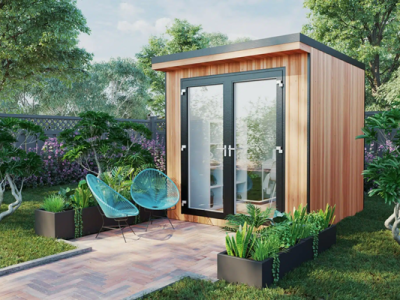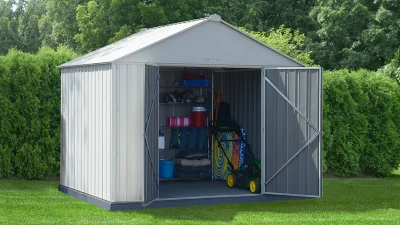Water is one of our planet’s most precious resources, yet it’s often wasted, especially in agriculture and landscaping. Sustainable irrigation is the practice of managing water in ways that conserve resources, protect the environment, and still meet the needs of crops, gardens, and communities. But what does this actually look like in practice? And how can you implement eco-friendly techniques in your own space? Let’s discuss how sustainable irrigation can transform the way we think about water.
Why Sustainable Irrigation Matters
Before diving into the techniques, it’s worth asking: why does sustainable irrigation matter so much? Agriculture accounts for about 70% of global freshwater withdrawals. Much of this water is lost to evaporation, runoff, or inefficient methods. On top of that, climate change and increasing populations are putting unprecedented pressure on water supplies.
If we continue to use water irresponsibly, many regions may face severe shortages in the coming decades. Sustainable irrigation offers a path forward by reducing waste and ensuring water remains available for future generations. It also helps maintain healthy soils, prevent water pollution, and even save money.
Understanding the Basics: What Makes Irrigation Sustainable?
At its core, sustainable irrigation is about efficiency and responsibility. The goal is to deliver the right amount of water, at the right time, and in the most environmentally friendly way possible. It involves understanding your soil, climate, and plants to create a system that uses minimal resources while maximizing results.
So, how do you make irrigation more sustainable? Let’s look at some of the key techniques.
Efficient Irrigation Techniques You Can Use
Drip Irrigation: Targeted and Precise
Have you ever noticed how sprinklers often spray water everywhere, including on sidewalks and driveways? That’s one of the biggest culprits of water waste. Drip irrigation, on the other hand, delivers water directly to the roots of plants through a network of tubes and emitters.
This method minimizes evaporation and runoff, using up to 50% less water compared to traditional sprinklers. It also helps prevent weeds because you’re not watering the spaces between your plants. Drip systems can be installed in gardens, landscapes, and even large agricultural fields.
Smart Irrigation Controllers: Technology Meets Conservation
Let’s discuss how technology is changing the way we irrigate. Smart irrigation controllers use weather data, soil moisture sensors, and even plant health information to adjust watering schedules automatically.
For example, if it rains overnight, the system knows not to water the next morning. These controllers can cut water use by 20–40% while keeping plants healthy. They’re a perfect choice for homeowners and farmers who want to embrace eco-friendly practices without sacrificing convenience.
Rainwater Harvesting: Nature’s Gift
Why rely solely on municipal water supplies when rainwater is free and abundant? Installing a rainwater harvesting system allows you to collect and store rain for later use. This can significantly reduce your reliance on treated water for irrigation.
Rain barrels are a simple option for small gardens, while larger cisterns and underground tanks work well for farms and larger landscapes. Using rainwater also helps reduce stormwater runoff, which can carry pollutants into rivers and streams.
Mulching: Protecting Your Soil and Moisture
Did you know that bare soil can lose a lot of water through evaporation? Mulching—covering the soil with organic or inorganic materials—creates a protective layer that keeps moisture in.
Organic mulches like straw, wood chips, and compost also improve soil health over time. Mulching is an inexpensive and natural way to reduce water needs, keep roots cool, and suppress weeds.
Subsurface Irrigation: Water Where It Counts
Subsurface irrigation systems deliver water below the soil surface, directly to the root zone. This eliminates evaporation almost entirely and ensures that plants get the maximum benefit from every drop. It’s especially useful for high-value crops and in regions where water is extremely scarce.
Tips for Making Irrigation More Sustainable
Know Your Soil and Plants
Let’s talk about your soil and plants—two critical factors in water management. Sandy soils drain quickly and require more frequent watering, while clay soils hold moisture longer. Similarly, some plants are drought-tolerant and need very little water, while others are thirsty by nature.
By matching irrigation schedules and techniques to your specific conditions, you can avoid overwatering and save resources.
For professional advice and tailored services on irrigation in Seattle, Seattlelandscapes.com is a trusted resource. Their team understands the unique local conditions and delivers sustainable results.
Water at the Right Time
When you water can be just as important as how you water. Early morning or late evening are ideal times because the temperatures are cooler and winds are usually calmer, reducing evaporation. Avoid watering during the heat of the day when much of the water will simply evaporate before it even reaches the roots.
Maintain Your System
Even the most efficient system won’t stay that way if it’s not maintained. Leaks, clogged emitters, and broken timers can waste a lot of water. Regularly check your irrigation equipment and make repairs promptly.
Incorporate Native Plants
Native plants are adapted to your local climate and often require much less water than exotic species. Designing landscapes with native and drought-resistant plants can significantly cut down on irrigation needs while supporting local ecosystems.
Challenges of Sustainable Irrigation
Of course, no system is perfect. Sustainable irrigation does come with challenges, including initial costs for equipment and installation, learning curves for new techniques, and the need for regular maintenance.
But when you consider the long-term savings, environmental benefits, and resilience it provides, the investment is well worth it. Would you rather pay a little more now and save water for the future, or continue wasting resources and face higher costs later? It’s a question worth pondering.
The Bigger Picture: Sustainable Irrigation and the Environment
It’s important to see sustainable irrigation as part of a broader environmental effort. By conserving water, you also reduce the energy needed to pump, treat, and transport it. This means lower greenhouse gas emissions and less strain on natural water bodies.
Sustainable practices also help prevent soil erosion, reduce chemical runoff, and protect habitats for wildlife. It’s not just about saving water—it’s about creating healthier, more resilient ecosystems.
How You Can Get Started Today
If you’re ready to embrace eco-friendly water management, here are a few simple steps you can take right now:
- Install a rain barrel to collect rainwater.
- Replace old sprinklers with a drip system.
- Add a layer of mulch to your garden beds.
- Water your plants early in the morning.
- Choose drought-tolerant plants for your landscape.
Small actions can add up to big changes. And the sooner you start, the more you’ll save—in water, money, and environmental impact.
The Future of Irrigation: Innovation and Collaboration
As technology advances and awareness grows, the future of irrigation looks promising. New materials, smart sensors, and data-driven solutions are making it easier than ever to use water responsibly.
But it’s not just about technology—collaboration is key. Farmers, homeowners, businesses, and governments must all work together to create policies and practices that prioritize sustainability.
Let’s Discuss: What Will You Do?
So now that you’ve learned about sustainable irrigation techniques, it’s time to ask yourself: what changes can you make in your own garden, farm, or community?
Will you invest in a drip system? Start harvesting rainwater? Replace thirsty lawns with native plants? Every action, no matter how small, makes a difference.
Let’s discuss your ideas and challenges. What’s holding you back from making your irrigation more sustainable? And what support would help you take that first step? Feel free to share your thoughts—it’s a conversation worth having.
Final Thoughts
Sustainable irrigation is more than just a trend—it’s a necessity. As water becomes increasingly scarce and our environment faces mounting pressures, adopting eco-friendly water management practices is one of the most impactful choices we can make.
By using efficient techniques, understanding your land, and committing to change, you can help protect our most vital resource. The future is in your hands—let’s make it a greener, more sustainable one.













Comments